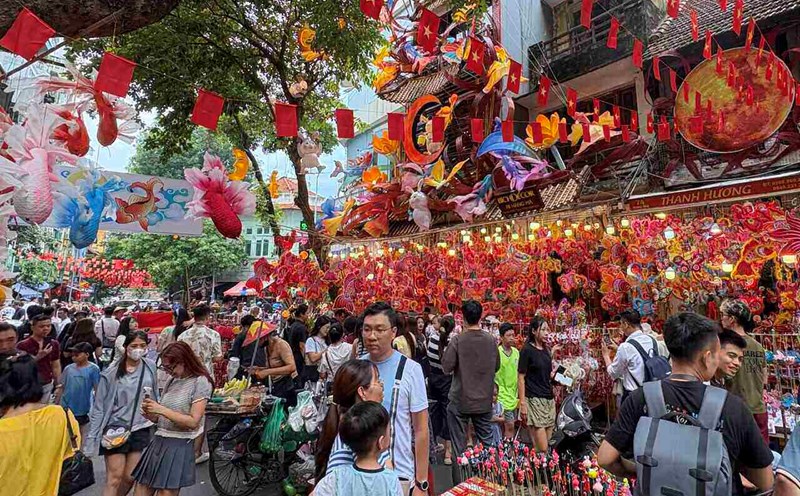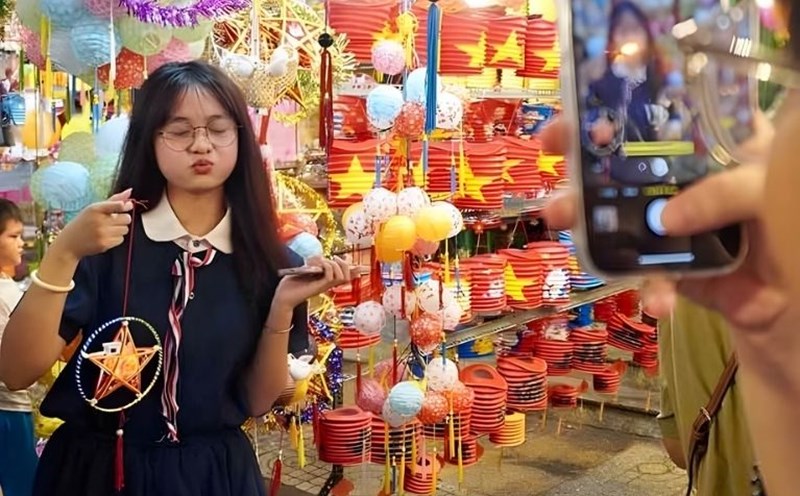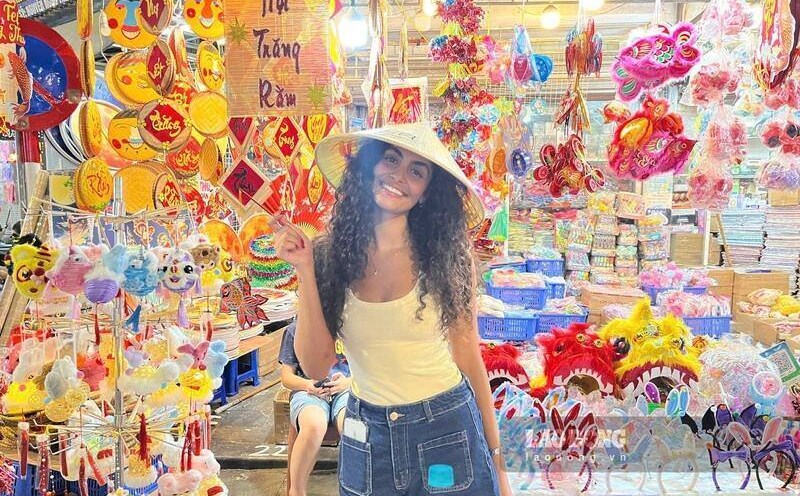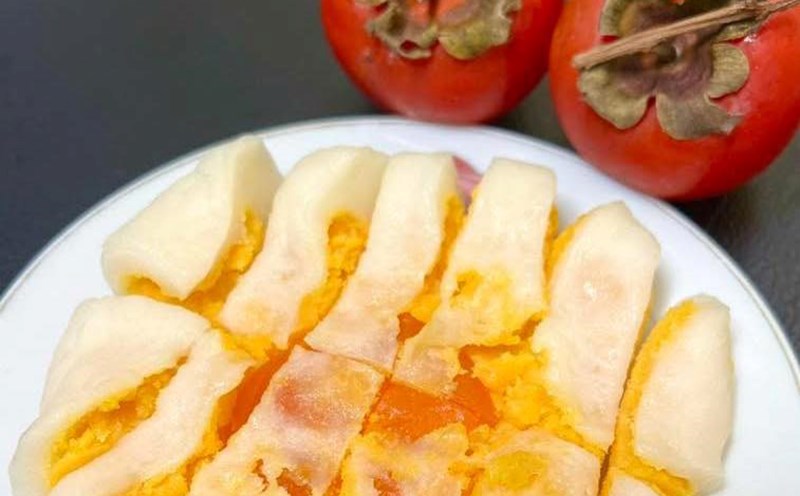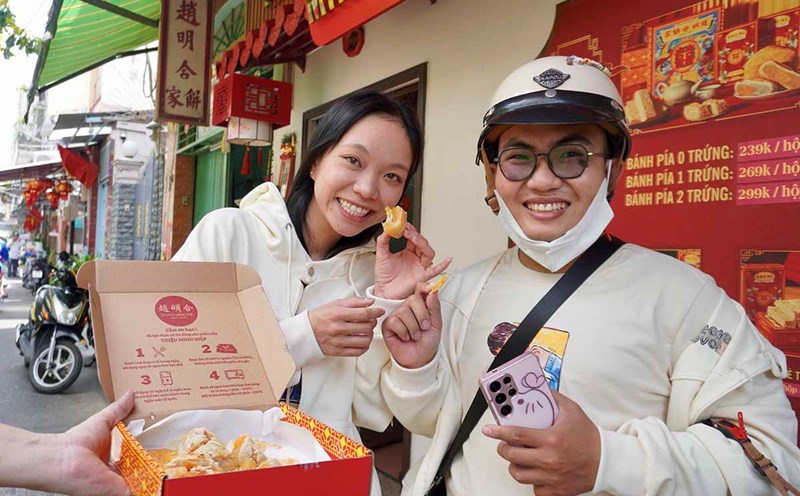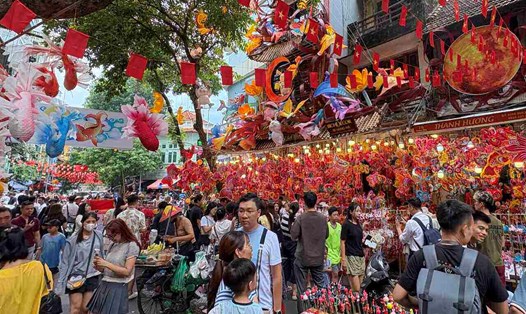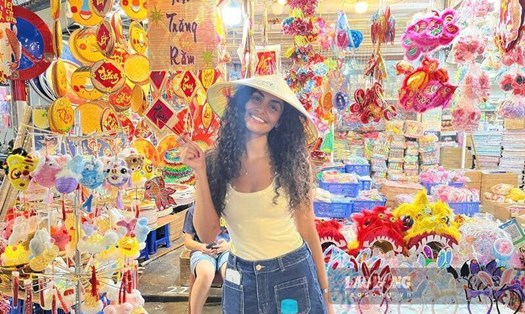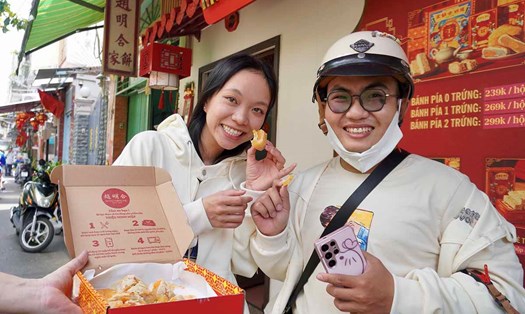Making traditional baked cakes with the family to prepare for the Mid-Autumn Festival is a normal activity at Ho Minh Anh's house (25 years old, living in Bat Xat commune, Lao Cai) every year.
However, this year, the cakes baked from Anh's family's wood stove received the most attention.
She happily said: "At first, I intended to post videos on social media as a way to save daily memories. But, surprisingly, the cakes made and baked in the style of our Giay ethnic group have attracted the attention of the online community".
This is a cultural feature of the Giay people that has been preserved and maintained since the time of our ancestors. The Mid-Autumn Festival of the Giay people also has many similarities to the Mid-Autumn Festival of the Kinh people. Therefore, making handmade baked cakes is also one of the familiar activities to make the Mid-Autumn Festival tray complete.
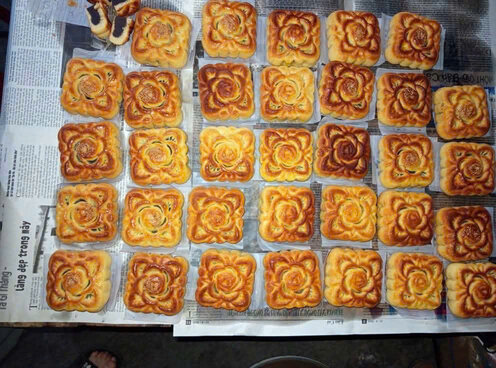
Modern Giay mooncakes also have traditional mixed fillings or familiar green bean and red bean fillings. The cake crust is made from 3 simple ingredients: flour, eggs and milk. The mixed filling includes coconut jam, sugar, sesame, peanuts and lemongrass.
Minh Anh explained: "The baked cakes in my hometown are made from pre-made materials, harvested from previous crops to save costs and ensure hygiene and safety.
Ingredients are usually prepared from the previous night, such as sesame, peas peeled, soaked first. Early the next morning, my mother and aunt will go to the market to buy more ingredients and then return home to work on the remaining stages."
After mixing the ingredients, the filling, baking, melting, and spreading the oil, the cake will be placed in a large pot. A batch of cake is usually baked for 30 minutes, then taken out to cool down to reduce the cake to oil. Normally, a large pot can accommodate up to 12 sell, each weighing 200 grams.
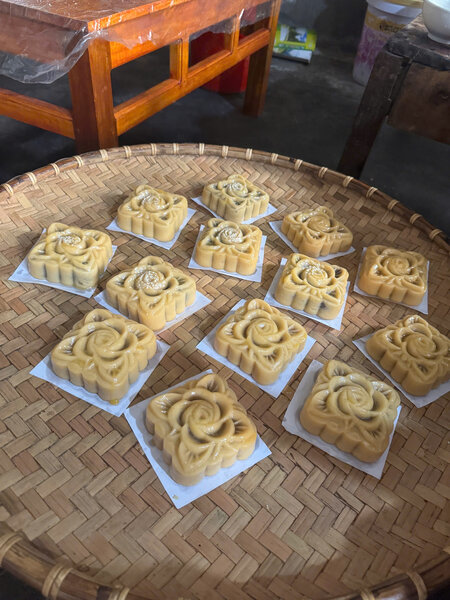
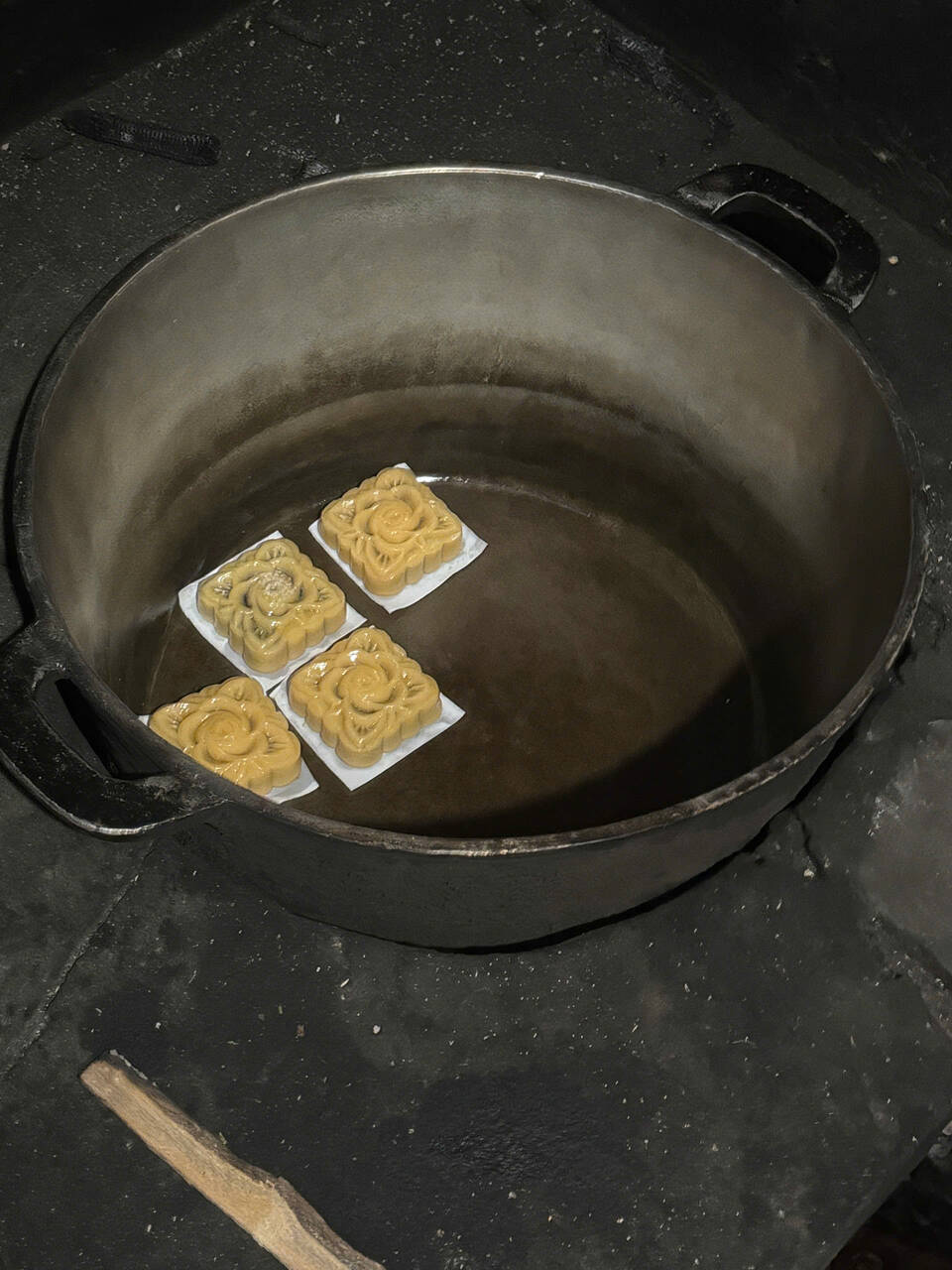
Anh's moon cake counter is located separately in a corner of the house because only those that need to cook a large quantity will need this stove. The unique feature of this stove is that in addition to the firewood burned under the oven, the firewood is also placed on the pot lid.
The young girl from the Giay ethnic group said: "After closing the pot lid, my mother will place an aluminum pot on it. In this aluminum pot is firewood, above the firewood is dry corn core. This method is used to make the heat transfer process efficient and heat-energy uniform, helping the cake cook faster and taste better".
Since last year, her family has baked more sticky rice red bean mooncakes that she often recommends as mochi red beans. This version is more elaborate than traditional baked cakes because the filling of the sticky rice is ground into flour and then steamed to make the cakes as sticky as sticky rice. This is also the cake that has been ordered the most since last year's Mid-Autumn Festival.
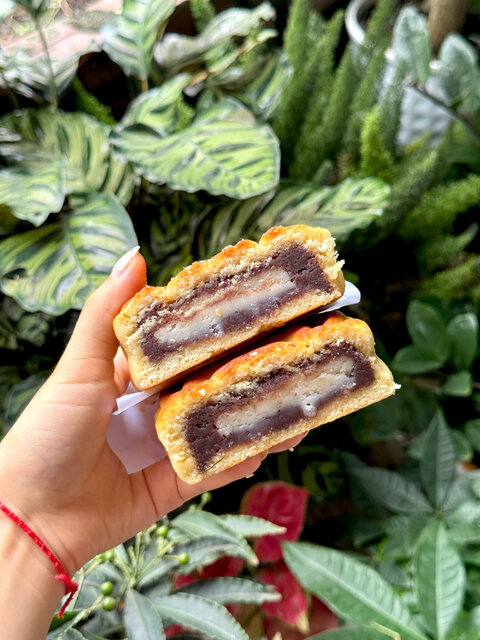
A day, Anh's family baked 100 cakes. Each cake is sold for 20,000 - 25,000 VND. According to Anh, the price of baked goods is quite cheap. However, because living conditions in the highlands are still difficult, this price is approved by local people for livelihood.
"The cakes that our Giay people make are still handmade, still using firewood, not elaborate or beautiful flowers but to preserve the soul of the countryside. The rustic, warm flavor has followed me throughout my childhood. Every time it's time for the Mid-Autumn Festival, in my hometown, the rice crop has not yet reached harvest time. Thanh tried it out, this is the busiest time of the year but being able to make traditional baked cakes by hand makes everyone happy," she confided.
Giay people ( self-proclaimed name: Giay, also known by other names such as Nhang, Giang). They use the Day language, belonging to the Thai - Ka Dai language family. About 200 years ago, the Giay people migrated from China to Vietnam and now live mainly in the northern mountainous provinces.
Giay people have a lot of experience in cultivating rice on terraced fields, while also being the servants in the fields to grow corn, rice, other plants with green tubers and vegetables, raising livestock in the way of freeing the hair and maintaining some traditional crafts.
Giay people reside in areas such as Bat Xat, Muong Khuong (Lao Cai), Yen Minh, Dong Van (Tuyen Quang), Phong Tho, Muong Te (Lai Chau).

